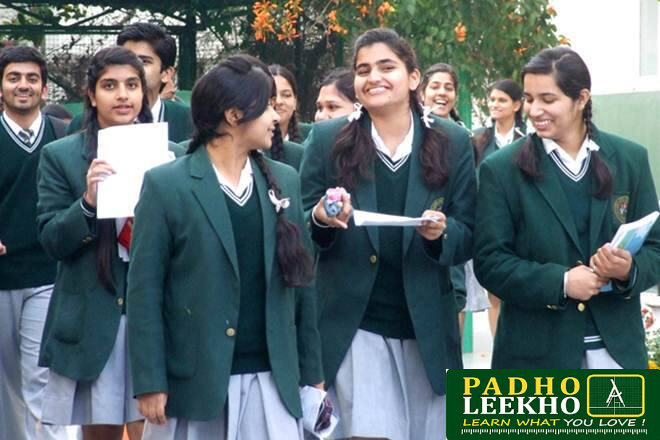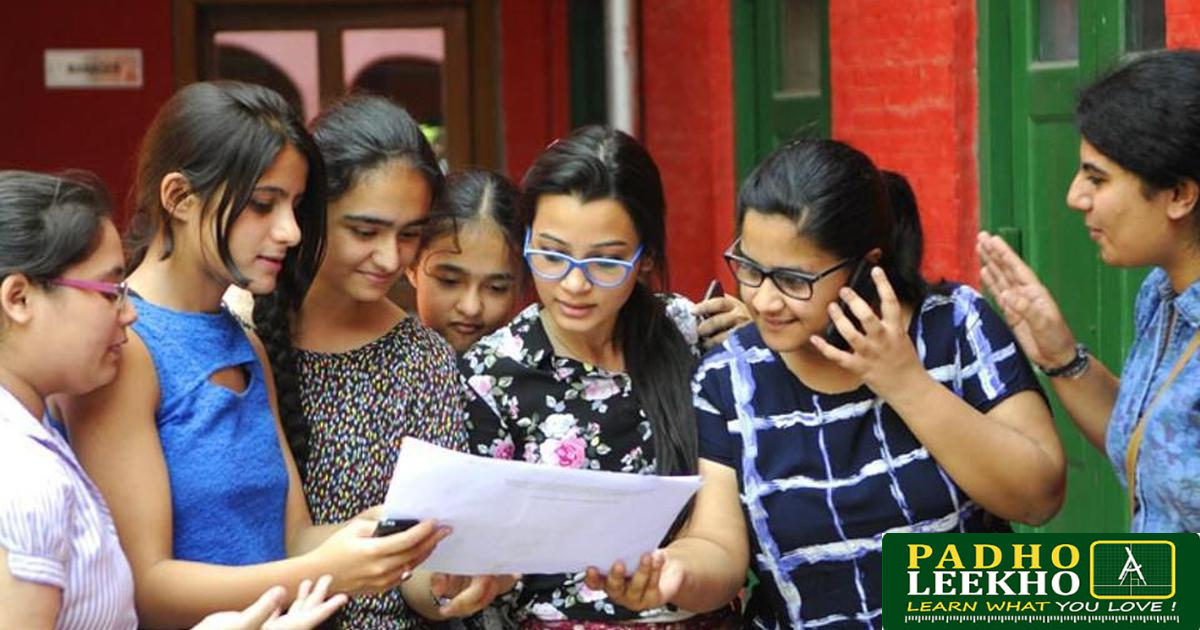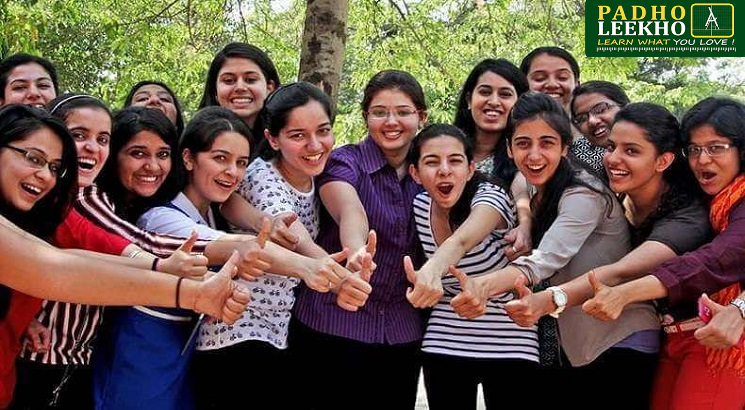Unlock Exclusive Access To ICSE Class 10th Course Materials.
ICSE Class 10th Courses By Padho Leekho
ICSE Class 10th Subjects:
- Group I English, Second Language, Geography and History-Civics as compulsory subjects.
- Group II – Choose any two subjects from Science, Mathematics, Economics, Commercial Studies, etc.
- Group III – Choose any one subject from Home Science, Fashion Designing, Computer Applications, etc.
English
Paper I: English Language
Q1: Write a composition of about 300– 350 words from a choice of subjects
Q2: Letter writing
Q3: Write about a specific situation:
A notice-based text on a given direction
Write an email on the given topic
Q4: Unseen prose passage
Q5: Functional grammar
Paper II: Literature in English
Drama and Prose
- The Merchant of Venice (Act III, Act IV and Act V only)
- Treasure Trove – A collection of ICSE Poem and Short Stories)
Poetry
- I know why the Caged Bird Sings – Maya Angelou
- The Patriot – Robert Browning
- Abu Ben Adhem – Leigh Hunt
- Nine Gold Medals – David Roth
Prose (Short Stories)
- The Little Match Girl – Hans Christian Andersen
- The Blue Bead – Norah Burke
- My Greatest Olympic Prize – Jesse Owens
- All Summer in a Day – Ray Douglas Bradbury
ENROLL For Best ICSE Class 10th Test Series
Second Language
Indian Language
Ao-Naga, Assamese, Bengali, Dzongkha, Garo, Gujarati, Hindi, Kannada, Khasi, Lepcha, Malayalam, Manipuri, Marathi, Mizo, Nepali, Odia, Punjabi, Sanskrit, Tamil, Tangkhul, Telugu, Urdu or any other language of an Indian community approved by the Council.
Modern Foreign Language
French
German
Spanish
History, Civics & Geography
Section A: Civics
The Union Legislature
- Lok Sabha
- Rajya Sabha
The Union Executive
- The President
- The Vice-President
- Prime Minister and Council of Ministers
The Judiciary
- The Supreme Court
- The High Courts
- Subordinate Courts
Section B: History
The Indian National Movement (1857 – 1917)
- The First War of Independence, 1857
- Factors leading to the growth of Nationalism – socio-religious reform movements and the role of the press
- First Phase of the Indian National Movement (1885-1907)
- Second Phase of the Indian National Movement (1905-1916)
Mass Phase of the National Movement (1915-1947)
- Mahatma Gandhi – Non-Cooperation Movement
- Khilafat Movement, Rowlatt Act, Jallianwala Bagh Tragedy
- Programme and suspension – Chauri Chaura incident and impact of the Movement
- The Civil Disobedience Movement
- Reaction to the Simon Commission, Declaration of Poorna Swaraj at the Lahore Session of 1929
- Dandi March
- Programme and impact of the Movement
- Gandhi-Irwin Pact and the Second Round Table Conference
- The Quit India Movement
- Quit India Resolution and
- The significance of the Movement
- Forward Bloc (objectives) and INA (objectives and contribution of Subhas Chandra Bose)
- Independence and Partition of India – Mountbatten Plan (clauses and its acceptance) and the Indian Independence Act of 1947 (clauses only)
The Contemporary World
- The First World War
- Rise of Dictatorships
- The Second World War
- United Nations
- The objectives of the U.N
- Major agencies of the United Nations: UNICEF, WHO and UNESCO – any four functions only
- Non-Aligned Movement
Section C: Geography
Part I: Map Work
Interpretation of Topographical Maps
- Locating features with the help of a four-figure grid reference.
- Definition of contour and contour interval. Identification of landforms marked by contours (steep slope and gentle slope), triangulated height, spot height and benchmark.
- Interpretation of colour tints used on a topographical survey of India map.
- Identification and definition of types of scale given on the map.
- Measuring direct distance and calculating area using the scale given therein.
- Marking directions between different locations using eight cardinal points.
- Identify Sites of prominent villages and/or towns, types of occupation and means of communication with the help of the index given at the bottom of the sheet.
- Identification of drainage patterns (Dendritic, Trellis, Radial, and Disappearing) and settlement patterns (Scattered and Compact).
- Identification of direction of flow left bank and right bank of a river.
- Identification of natural and man-made features.
- Meaning of important terms- Relative height/depth, broken ground, surveyed tree, fireline, causeway, aqueduct and digging
Map of India
- Mountains, Peaks and Plateaus
- Plains
- Desert
- Rivers
- Water Bodies
- Pass
- Longitude
- Direction of Winds
- Distribution of Minerals
- Soil Distribution
- Cities
- Population
Part II: Geography of India
- Location, Extent and Physical features
- Climate
- Soil Resources
- Natural Vegetation
- Water Resources
- Mineral and Energy Resources
- Agriculture
- Manufacturing Industries
- Transport
- Waste Management
JOIN The Best ICSE 10th Courses At Affordable Price
Science
Science Paper I: Physics
- Force, Work, Power and Energy
- Light
- Sound
- Electricity and Magnetism
- Heat
- Modern Physics
Science Paper II: Chemistry
- Periodic Properties and variations of Properties
- Chemical Bonding
- Study of Acids, Bases and Salts
- Analytical Chemistry
- Mole Concept and Stoichiometry
- Electrolysis
- Metallurgy
- Study of Compounds
- Hydrogen Chloride
- Ammonia
- Nitric Acid
- Sulphuric Acid
- Organic Chemistry
Science Paper – III: Biology
- Basic Biology
- Plant Physiology
- Human Anatomy and Physiology
Mathematics
- Commercial Mathematics
- Algebra
- Geometry
- Mensuration
- Trigonometry
- Statistics
- Probability
Economics
- The Productive Mechanism
- Theory of Demand and Supply
- Market
- Banking in India
- Inflation
- Consumer Awareness
Commercial Studies
- Stakeholders in Commercial Organizations
- Marketing and Sales
- Finance and Accounting
- Human Resources
- Logistics
- Banking
Computer Application
- Revision of Class IX Syllabus
- Introduction to Object Oriented Programming concepts
- Elementary Concept of Objects and Classes
- Values and Data types
- Operators in Java
- Input in Java
- Mathematical Library Methods
- Conditional constructs in Java
- Iterative constructs in Java
- Class as the Basis of all Computation
- User-defined Methods
- Constructors
- Library classes
- Encapsulation
- Arrays
- String handling


























